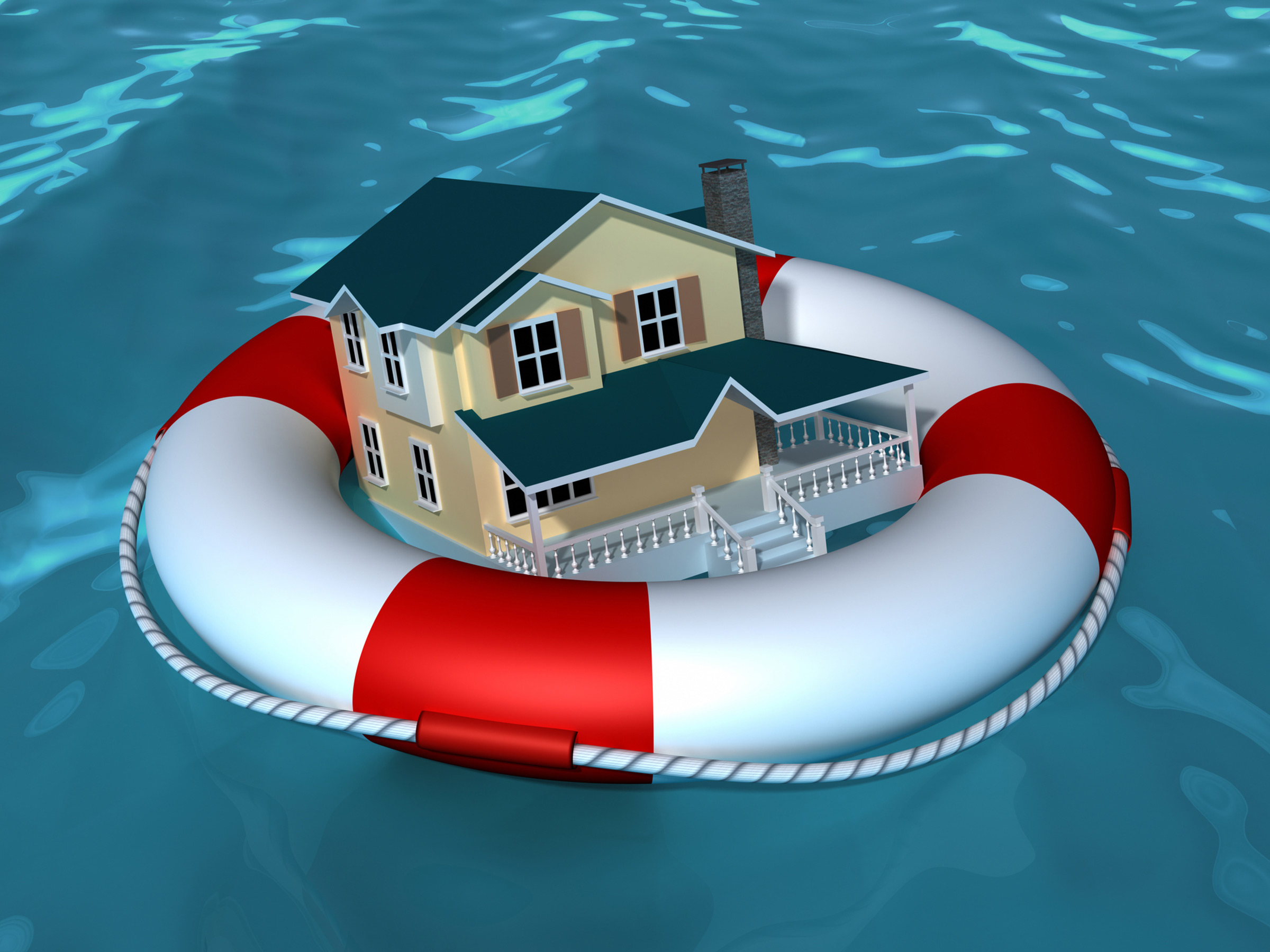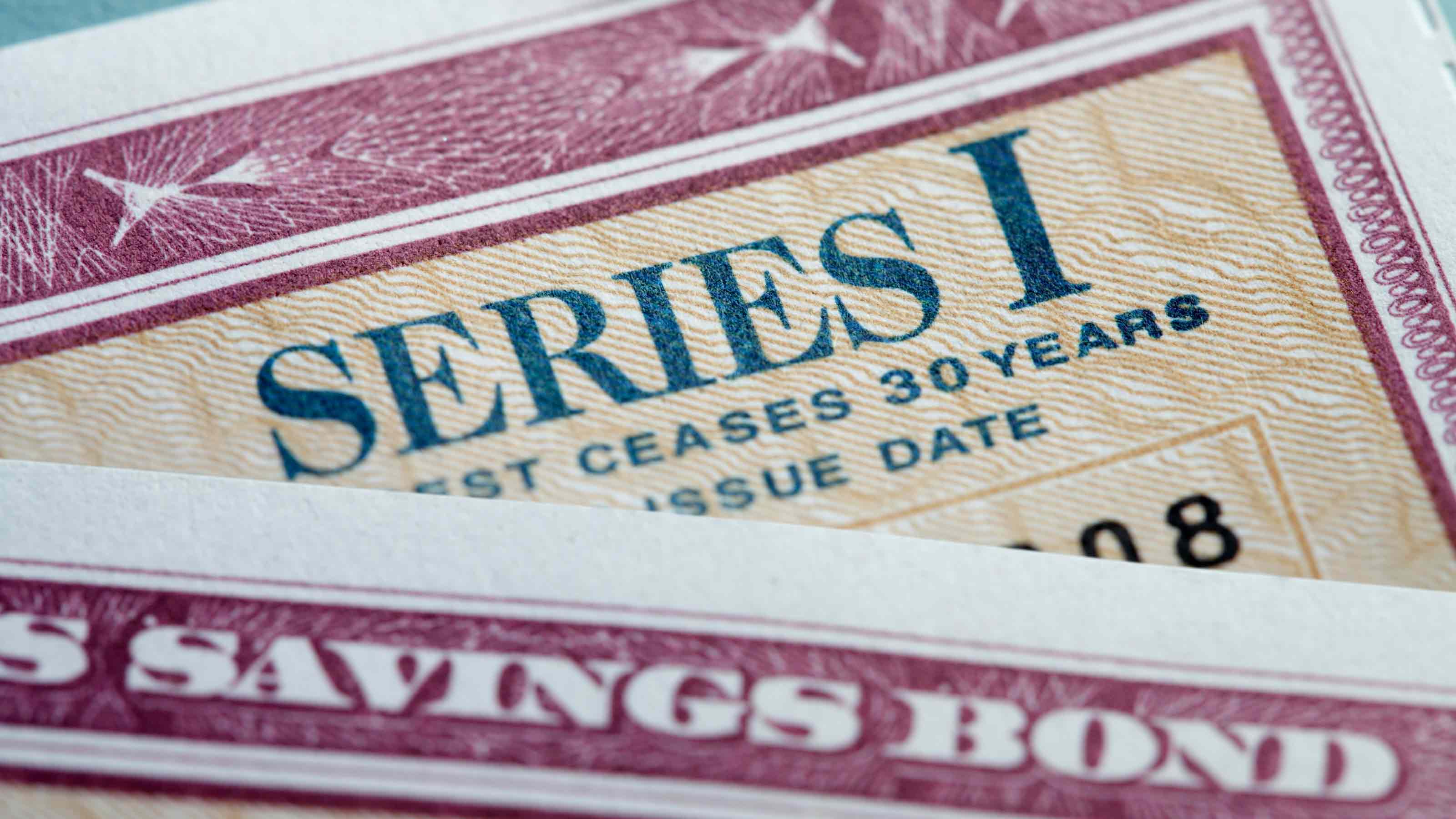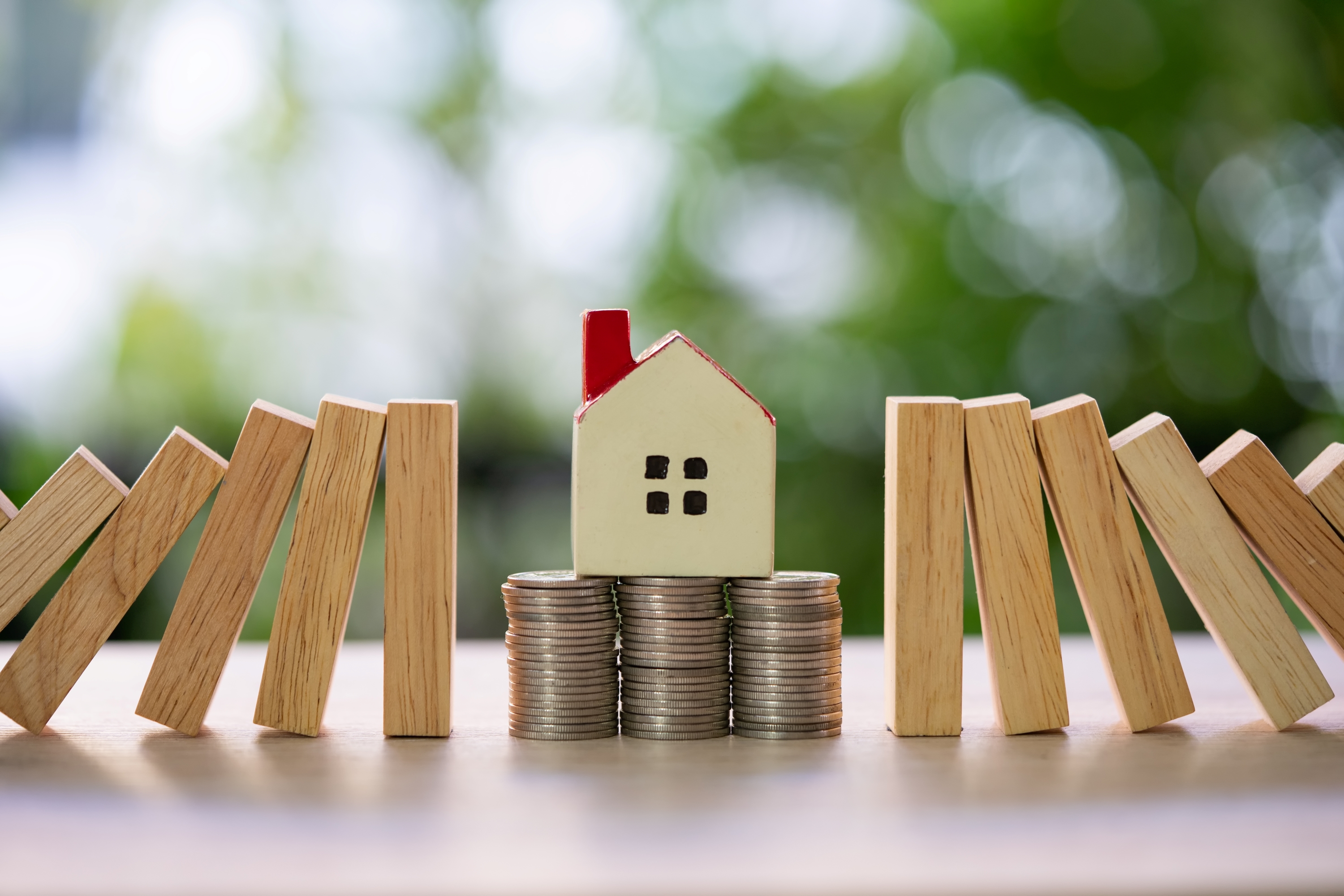PODCAST: Changes Coming to Flood Insurance with Laura Lightbody
The National Flood Insurance Program is getting an overhaul that could send your rates up (or down). We dig into what's changing with this coverage that many have—and many more need. Also, a bond that pays over 7 percent, for now.

Listen now:
Subscribe FREE wherever you listen:
Apple Podcasts | Google Podcasts | Spotify | Overcast | RSS
Links and sources mentioned in this episode:
From just $107.88 $24.99 for Kiplinger Personal Finance
Become a smarter, better informed investor. Subscribe from just $107.88 $24.99, plus get up to 4 Special Issues

Sign up for Kiplinger’s Free Newsletters
Profit and prosper with the best of expert advice on investing, taxes, retirement, personal finance and more - straight to your e-mail.
Profit and prosper with the best of expert advice - straight to your e-mail.
- When Savings Bonds Make Sense
- What Grandparents Need to Know About Using Savings Bonds for a Grandchild’s Education
- Flood Insurance May Cost You More
- How to Protect Your Home from Natural Disasters with the Right Insurance
- FEMA Flood Maps
Transcript:
David Muhlbaum: Flood insurance. Maybe you have it, maybe you don’t. Maybe you thought you didn’t need it, but mother nature told you otherwise this year. The National Flood Insurance Program is in for a revamp, so we brought on an expert guest to help explain what that means to people already covered or in the market for a policy. Also, a bond that pays over 7%? Yeah, there’s a catch. All coming up in this episode of Your Money’s Worth. Stick around.
David Muhlbaum: Welcome to Your Money’s Worth. I’m kiplinger.com Senior Online Editor David Muhlbaum, joined by my co-host, Senior Editor Sandy Block. How are you doing Sandy?
Sandy Block: I’m great. I understand you want to talk about bonds? Bonds, just bonds.
David Muhlbaum: Bonds. I want to talk a little bit about bonds. In part, because in the near future, possibly our next episode, we’re going to have on Mr. Fixed Income himself, Jeffrey Kosnett, the editor of Kiplinger’s Investing for Income newsletter. And so we’re going to be going deep into rates and all that, but this is just a taste, but it’s one with a pretty eye-popping number. So let’s start there and then you can give me all the yeah-buts. You say you’ve got an investment opportunity for me that’s paying 7.12% and as safe as a US Treasury bill?
Sandy Block: Yes, siree! I know that’s a big number, and it’s as safe as a Treasury because it is a Treasury. This product is a United States Savings Bond Series I.
David Muhlbaum: I, like Igor?
Sandy Block: Igor like the letter before J.
David Muhlbaum: Okay. And it’s 7.12%. Well, savings accounts and even five-year CDs are paying a quarter percent. I mean, the 10-year Treasury that everyone’s been getting so wound up about, it’s yielding 1.58% or so. So, what gives?
Sandy Block: Well, yeah, and I guess the question is why isn’t everyone running out and buying I Bonds right now? Well, there are several pretty big caveats. For one thing, the 7.12% is for I Bonds bought between November and May. At that point, the rate will be adjusted again.
David Muhlbaum: Okay, well, you still have time.
Sandy Block: You still... Okay. But here’s another big caveat. The I Bond consists of two components, an inflation-adjusted component and a fixed rate. And the fixed rate is zero, so if the inflation goes down next year, as many people expect, you are not going to get 7.12% going forward.
David Muhlbaum: Ah, your bond next year will... I see. So, it’s only going to pay 7.12% until the next adjustment?
Sandy Block: Right. And if inflation stays high, I suppose it could pay that again, but that kind of seems unlikely. The other reason I can’t get our investing folks really excited about I Bonds, because I was pretty excited. I mean, I write for people who are very risk averse, and this is as safe as it gets. There are a couple other problems with savings bonds. One is that there’s a limit to how much you can put in one. You can invest no more than $10,000 in an electronic savings bond and $5,000 in a paper bond out of your tax refund. So you can’t put everything in an I Bond. That’s one problem. You can’t take anything out for a year. So this isn’t money that you need... You don’t want to invest money in an I Bond that you might need next month.
David Muhlbaum: Period. Like it’s not early-penalty kind of stuff?
Sandy Block: Nope. Nope. You cannot. You cannot take.
David Muhlbaum: Just goodbye?
Sandy Block: I mean, I’m not sure what the penalty, they just won’t give it to you. Sorry. Now if you take it out after the first year up to five years, then you take a penalty similar to if you cash out like a five-year CD in four years or three years. You will give up some interest. Now, frankly, right now this interest rate is so good that I don’t see that as a huge risk. You could give up some interest and still come out ahead, but it’s something to be aware of. So those are the big problems with I Bonds is you can’t invest a whole lot of money. You can’t take it out in less than a year, and if you take it out in less than five years, you’ll give up some interest.
Sandy Block: But you know, I think a good way that it was explained to me when I was writing about this is if you were looking, say you’ve got your emergency savings in an online savings account that you can get at at any time, but is earning nothing. If you wanted to supplement that with money that maybe you’d want, you need in a couple of years for I’m thinking like a down payment on a house, car, something like that — this is a pretty good bet. You’re only going to earn this great rate until it’s adjusted, but it’s unlikely... Say it’s adjusted to 3%, you’re still going to get a pretty good rate as long as inflation is up, and a lot of people think that even next year, our folks are predicting that it won’t be 6% next year, but it’s going to be higher than average. I think an I Bond is a pretty good bet.
David Muhlbaum: Hmm. Yeah, and I think there’s also I Bonds, another reason for them is for paying for college because I think it’s the I Bonds that have a special arrangement where the interest you can... There’s an income-qualified special exemption for the interest earned.
Sandy Block: Yes, but this is really complicated, and people always mess this up. If you buy the I Bond, you, the parent.
David Muhlbaum: Yeah?
Sandy Block: And when your child reaches college age and you meet certain income eligibility thresholds, then you get a tax break on when you cash out your I Bonds to pay for college, you get a tax break.
David Muhlbaum: That’s a lot of needles to thread which I imagine why-
Sandy Block: It’s a lot of needles to thread, and where people mess this up is they buy I Bonds for their kids thinking, "Well, my kid is going to be going to college." But if I Bond is in your kid’s name, it doesn’t work. But there is a special tax break. I’ll look for something to put in the show notes so people can delve into it, but there is a tax break for college. And the other good thing about I Bonds is they’re exempt from state and local taxes. So if you live in a high-tax state, that’s kind of a nice break too.
David Muhlbaum: Like all Federal Treasuries?
Sandy Block: Yes, yes.
David Muhlbaum: Right.
Sandy Block: Exactly.
David Muhlbaum: Okay. So maybe a little money, a little upside in Series I, but don’t get too excited, a little excited. Coming up next, we are going to talk about flood insurance with an expert in the field. And I don’t just mean Sandy, who’s been studying flood insurance backward and forward. We’re going to be joined by Laura Lightbody from the Pew Charitable Trusts.
Changes Coming to Flood Insurance with Laura Lightbody
David Muhlbaum: Welcome back to Your Money’s Worth. For our main segment, we’re going to return to the topic of disaster insurance. Something the past year has given us plenty of reason to discuss, but we are going to focus on flood insurance which Sandy has just written about for the December issue of Kiplinger’s Personal Finance. And since she wrote about it, I’ll let her introduce our guest, Laura Lightbody.
Sandy Block: Right. We asked Laura to join us today because she’s the director of the Pew Charitable Trust Flood Preparation Initiative, which is aimed at reducing the impact of flood-related disasters on taxpayers, communities, and the environment. She knows the flood insurance system backward and forward. We’ll also dig into some of the nuts and bolts of flood insurance for homeowners, what you’ll pay, how you get it, and why you might need it, even if you don’t already have it. Welcome, Laura.
Laura Lightbody: Thank you. Thanks for having me.
Sandy Block: Laura, one of the reasons we wanted to have you on today is because millions of homeowners are going to see the amount they pay for federal flood insurance go up, while others will see their rates decline. Can you tell us what’s behind this change?
Laura Lightbody: Sure. As you noted briefly, flood disasters are becoming all too common. They are the most common and costly natural disaster that impacts all 50 states, every single community around the country. And back in the 60s, the federal government recognizing this problem created what is now called today the National Flood Insurance Program. It provides federally backed flood insurance to nearly 5 million policyholders across the country.
Laura Lightbody: That program is outdated and has really not been updated since the 60s. The way that it sets insurance premiums to provide that insurance has not been updated. It’s about 40 years old, and recently the Federal Emergency Management Agency, which is FEMA, that provides this insurance to policy holders said, "We’re going to update this methodology so that it is up to date with current flood risk and kind of enter into the 21st Century." As a result of that, insurance rates are going to change for 5 million policyholders. But in fact, 1.2 million policyholders are going to see their rates decrease.
Sandy Block: Right? So Laura, let’s dig into that, go into that a little bit. Where will homeowners likely see a decline in premiums and who are the ones who are likely to see them go up?
Laura Lightbody: So what we know about flood insurance rates based on the data that is out there provided by FEMA is that 1.2 million policyholders are going to see their rates decrease. And that is across all 50 states. In some states, Michigan, Maryland, for example, the majority of policyholders are going to see rate decreases. If this program never went into effect, it’s called Risk Rating 2.0: Equity in Action, every single 5 million policyholders would see their rates increase this year. And it’s really dispersed across the country. What we know about the old system, the old way of doing things for flood insurance is that it tended to have a bias against lower value, lower risk homes, which were over paying for flood insurance and higher risk, higher value homes were not paying their fair share. So Risk Rating 2.0, this new flood insurance rate-setting system really aims to fix that imbalance, so that individual properties are paying their fair share for flood insurance.
Sandy Block: Can we take from that, Laura, that it’s folks with expensive beachfront properties who might be the ones who are going to see their rates going up?
Laura Lightbody: That is an assumption one can make. It’s hard to know exactly. FEMA is protected by the privacy act, which ensures that we don’t see addresses, right? So I don’t know your exact flood risk, but we do know sort of on an area basis where rates are going to go up and where rates are going to go down. What’s interesting about sort of expensive beach houses is that flood insurance only covers $250,000. And if you own your home outright, for example, you’re not federally required to carry flood insurance. And so, it doesn’t always tell the full picture about these second homes or kind of beach house homes that we think of in the outer banks or on the Eastern shore in New Jersey.
Sandy Block: One thing that occurred to me, Laura, is that given these rapid changes, how long are these changes going to be good? I mean, how frequently are communities going to need to update their flood maps to reflect what’s going on?
Laura Lightbody: The way that the flood insurance set premiums right now is on an annual basis. So just like your car insurance or your homeowner’s insurance, the rates are set annually to sort of reflect the methodology that exists. Now what FEMA is trying to do with this system, but also its maps and its floodplain management, and the way that really overall the way that the nation provides disaster recovery and relief is to look forward. This whole program and many of our other disaster relief programs that are provided to flood victims have been really designed based on old data and looking in their rear-view mirror. And so the maps, the insurance rates, really floodplain management, which is the way that communities really incorporate flood risk are trying to incorporate things like sea level rise, change in flood events. It simply rains more and it’s more costly, and so all of these factors are now starting to be incorporated into price, into maps, and into community development so that ultimately communities are more insulated and safer when it does flood.
David Muhlbaum: Laura, in terms of how the changes and rates are determined and considering the inputs that determine the rate changes, is actual loss history involved? Like we know that this property flooded, so now you’re going to pay more?
Laura Lightbody: The old system of setting rates was mostly based on maps that essentially said you’re either in a flood risk area or you’re out and national averages about rebuilding. That was the data that was available, and so this new system Risk Rating 2.0, incorporates a lot more data that is available than it was 40, 50 years ago, right? So it now incorporates things like catastrophic modeling. It doesn’t use this national average system that created this kind of like staircase, right? So if we were all in this big zone, we all paid the exact same amount in flood insurance. It’s going to be much more granular now because it will incorporate things like a homes’ proximity to a river, heavier precipitation events, catastrophic modeling; it’s going to use industry data. So there’s just a lot more inputs that make it a more sophisticated system, but also provide a homeowner with a truer price to represent flood risk.
David Muhlbaum: So how do homeowners find out where they fit in? That is to say, what’s happening with their rates or what if they don’t have flood insurance and are thinking about getting it?
Laura Lightbody: So homeowners are able to now. This new methodology pricing system went into effect starting October 1, and homeowners can call their flood agents and say, "Is my flood insurance going to go up or down under this new system?" You could also call an agent if you don’t have flood insurance to inquire about flood insurance. Anyone in the country can get flood insurance. You do not have to live in this kind of predetermined mapped area by the federal government to have flood insurance.
Sandy Block: Okay, Laura, that’s a really good segue into a question I wanted to ask you. After Ida, a lot of people who do not consider themselves living in flood zones were devastated by flooding. And I guess the question is, do more people need flood insurance, and what should you do if you think you might want to have it?
Laura Lightbody: What we can tell you is that where it rains, it can flood. And so flood insurance really is the first line of defense when it comes to protecting yourself, particularly financially, from the burden of flooding. About 40% of insurance claims actually happen outside of this high risk flood area, which is where homeowners are required to have flood insurance. And so what that tells us and what other data tells us is that indeed a lot of flood events happen outside of this high flood risk area.
So flood insurance is that first line of defense. What a lot of people don’t know is that the insurance program really does aim to make flood victims whole. There are a lot of other federal resources for recovery and rebuilding provided through FEMA, the housing department, the Small Business Administration, but those programs do not make flood victims whole. If you look at data from 2017, the average disaster assistance grant, so capturing some of these small business loans, housing department was less than $9,000. But the average for a flood insurance claim was about $90,000. That is a huge difference when it comes to recovering from a major event that may have destroyed parts or all of your home, which is your largest and often the largest investment you’ve made in your life.
David Muhlbaum: So we’ve established that everyone can buy flood insurance, and it sounds to me like we’ve got three kinds of customers. We’ve got the people who already have flood insurance or are required to have flood insurance, we’ll call them traditional customers, and they’re the ones worrying about rates. Then we have people who have come to realize that they need flood insurance because while they didn’t think they’d get flooded, they did. Maybe it was Hurricane Ida, maybe a nor’easter. And then we have people who might well need flood insurance, but they haven’t yet had a flooding event to prove the point, yet. And I wonder if we should give them a little guidance of where do you start, and I’m hearing where you start is with an insurance agent?
Laura Lightbody: One of the places to start is with an insurance agent. So you could call your homeowner’s insurance agent, for example, and say, "Can you give me an estimate for flood insurance?" FEMA has maps where you can type in your address. They’re a little hard on the eyes. They’re not super, super easy to understand, but you can put in your address. There are also some other resources, so realtor.com, Redfin, Zillow. The kind of home buyer resources are now incorporating some data about flood risk into homes that are for sale. So that’s a resource for sort of the folks on the home buyer side. But the reality is that if you’re in a area that is not of super high flood risk, your flood insurance is going to be pretty low, right? Because price is a clear indicator of risk and the higher your risk, the higher your flood insurance is going to be. Again, just like your health insurance or your car insurance. And we connect those things very closely, but when it comes to flood risk, there tends to be this kind of skepticism and reservation about connecting actual risk with price.
Sandy Block: That leads me to another question, Laura. And my understanding is the reason we have federal flood insurance in the first place is because private insurers would not provide it. And the other thing I’ve learned in researching this is even with the increase, most people aren’t going to pay more than an additional 10 or $20 a month. Is there a moral hazard here? Does federal flood insurance encourage people to build in places or stay in places that, given climate change, they should not be living?
Laura Lightbody: It’s very hard to connect the dots between this exact program and what has occurred in development, in terms of homes and assets, a lot of federal assets, low income housing located in floodplains, but it is clear that over time more development has occurred in flood-prone areas. If you look back to when this program was created under the Lyndon Johnson presidency, it was created after a series of catastrophic events happened. And as you said, the private insurers were not providing insurance. And so the federal government felt, based on sort of a moral position, to provide flood victims with something. At the time, it was estimated that there were about 5,000 communities that were flood prone. That was in the 60s. Today, there are 25,000 communities that participate in the national flood insurance program, which tells us that A. The data’s getting better because we’re able to capture and assess risk, but that there are simply more assets and communities in flood prone areas.
Again, going back to price, price is kind of one of those great indicators of risk. And I wish I could sort of connect the dots more clearly be, but because it’s such a, sort of a large, abstract program, it’s very hard to say because of the National Flood Insurance Program, X, Y, and Z has happened, but it is very clear that over time more development has occurred. More homes are located in high risk areas.
Laura Lightbody: And the question for, not just the federal government, but community leaders becomes, at what point do we stop? Not only at what point do we stop subsidizing flood insurance, because even under this new system, there will be subsidies that exist. At what point do we, local mayor, local city planners say we are not going to build in that area again? We’re not going to rebuild that community, or we’re going to use the data that we have today that tells us, sea level rise is coming, and we’re not going to allow development to occur in a certain area. And that is the question that politicians and elected officials are faced with today. And they can no longer fall back on the fact that the data doesn’t exist because the data is there to tell us where the risk is and what risk is going to look like in the future.
David Muhlbaum: So these changes to maps and rates, how do they reflect efforts by communities to mitigate risk? You know, while saying, "Don’t build there," seems like a step many places are reluctant to take, either there are other things in play. I’m thinking about physical structures like levees, drainage, that sort of thing. Do those end up paying off through rate relief?
Laura Lightbody: So the maps and the rates are connected, but they’re not the exact same thing. So under the insurance program, FEMA supports communities in developing flood rate maps, essentially. They go into a community and they use engineers and modelers and they design a map that is kind of the highest flood risk area of that community. And within those bounds is where the federal government says, "Everyone in this area has to have flood insurance."
The rate methodology uses those maps as sort of one factor in determining how the rates are going to be set and what your rate is going to be. But other factors are incorporated, so the elevation of your home is incorporated. Communities will now be rewarded for certain mitigation activities, which was not the case. And mitigation is a really important driver of one, earning some decreases in premiums, actually.
So if communities or individuals undertake certain mitigation activities, so elevation is one. Community level mitigation like enhanced stormwater management is another that can actually bring rate relief to that entire community. And that’s really important because it’s very hard to take existing communities and their flood risk and sort of retrofit, right? That’s what we’re doing with mitigation. We’re saying the flooding in this community is simply overwhelming the capacity of our roads, it’s overwhelming our storm water systems, right? The rivers have nowhere to go because we have either built around them or we have moved them, right? We have spent decades moving and straightening rivers and then building along them.
Sandy Block: It’s interesting because it sort of sounds analogous to what’s going on out west where people’s ability to get insurance at all or pay certain rates is being determined by their mitigation efforts, what they’re doing around their homes. And it seems like there’s more and more data that sort of allows insurers and private insurers to get very granular in terms of who they want to insure and who they don’t. So I think that’s an interesting trend we’re seeing in all kinds of natural disasters.
Laura Lightbody: Flooding is sort of the biggie because the federal government has a program around it. And so it’s subsidized by taxpayers and so it is highly scrutinized. There is regular review of it. There is a small private market, too, for flood insurance. It’s roughly 3% of the market. In some places, it’s more robust like in Florida. And then you have the analogy of what is happening, sort of with fire, right? And a lot of the solution sets are the same. Insurance is one, but the other is really about development decisions and economic growth decisions because communities are running up against fire just like they are running into water.
David Muhlbaum: So, okay. And then to come back to the idea of community-based mitigation, individuals can do some things, but they can’t do everything. Well, sometimes they don’t do anything. Well, what’s the sort of model action for communities to take to reduce risk? You know, it’s that man versus nature thing where maybe we were straightening the river before, but now we’re going to think more intelligently about the management. But again, there has to be political will for that to happen.
Laura Lightbody: That is the case for flood. And I think the hard part about flooding is that the greater they, or we, tend to blame kind of individuals, you know, "Why did you buy that house? You knew it was in a flood area." And to some degree, that is a problem, right? There are what are called repeatedly flooded properties, homes that just flood over and over. They’ve made multiple-
Sandy Block: Barrier islands!
Laura Lightbody: Yeah, they’ve made multiple claims against the program, and they’re not moving. And they’ve been offered buyouts and they’re not moving, right? Those are for the most part kind of outlier properties. But a lot of these decisions are being made by developers, city planners, elected officials, and a lot of it comes down to local land use decision. And so your point about making very hard choices is right, because a lot of times you are making a decision about economic growth or future risk. And you have some communities who are able to do it, right? So Brevard, North Carolina, Fort Collins, Colorado, both have rivers run through them, have taken a stand and said, "We are making strong regulation around this river where you cannot build certain things." And that’s very hard for elected officials to do because they are saying in certain areas, we are not welcoming economic growth to this area. But it’s a long-term decision that is about risk, and actually ultimately will end up saving that community because Fort Collins is one that has already been through a great flood and they don’t want to do that again because it ends up being way more costly in the long run.
Sandy Block: This has been a really interesting conversation, and we’ve written about homeowners insurance in general and flood insurance in particular, so we’ll post that in show notes. But thank you so much for joining us, Laura. And I think this will really help people understand if their rates go up or down or if they need to get flood insurance at all. So thank you.
David Muhlbaum: Yes, Laura, thank you very much for your insights.
Laura Lightbody: Thank you.
David Muhlbaum: That will just about do it for this episode of Your Money’s Worth. If you like what you heard, please sign up for more at Apple Podcasts or wherever you get your content. When you do, please give us a rating and a review. And if you’ve already subscribed, thanks, please go back and add a rating or review if you haven’t already. To see the links we’ve mentioned in our show, along with other great Kiplinger content on the topics we’ve discussed, go to kiplinger.com/podcast. The episodes, transcripts, and links are all in there by date. And if you’re still here, because as you want to give us a piece of your mind, you can stay connected with us on Twitter, Facebook, Instagram, or by emailing us directly at podcast@kiplinger.com. Thanks for listening.
Profit and prosper with the best of Kiplinger's advice on investing, taxes, retirement, personal finance and much more. Delivered daily. Enter your email in the box and click Sign Me Up.

In his former role as Senior Online Editor, David edited and wrote a wide range of content for Kiplinger.com. With more than 20 years of experience with Kiplinger, David worked on numerous Kiplinger publications, including The Kiplinger Letter and Kiplinger’s Personal Finance magazine. He co-hosted Your Money's Worth, Kiplinger's podcast and helped develop the Economic Forecasts feature.
-
 3 Major Changes to the Charitable Deduction in 2026
3 Major Changes to the Charitable Deduction in 2026Tax Breaks About 144 million Americans may qualify for the 2026 universal charity deduction, while high earners face new IRS limits. Here's what to know.
-
 Where to Stash Cash as Yields Fall, According to Advisers
Where to Stash Cash as Yields Fall, According to AdvisersYour best options depend on how soon you'll need the money and your tolerance for risk.
-
 Control vs Protection Quiz: Which Trust Do You Need?
Control vs Protection Quiz: Which Trust Do You Need?Quiz Take this simple quiz to discover whether a revocable or irrevocable trust should be the cornerstone of your estate plan.
-
 How Are I Bonds Taxed? 8 Common Situations to Know
How Are I Bonds Taxed? 8 Common Situations to KnowBonds Series I U.S. savings bonds are a popular investment, but the federal income tax consequences are anything but straightforward.
-
 How Are I Bonds Taxed? Nine Common Situations
How Are I Bonds Taxed? Nine Common SituationsBonds Series I bonds are a popular investment that can help you save on taxes, but the federal income tax consequences can be complex.
-
 Is Home Insurance Required? Not Necessarily, But That Doesn't Mean You Should Drop It
Is Home Insurance Required? Not Necessarily, But That Doesn't Mean You Should Drop ItHome insurance is required by most mortgage lenders. But even if your home is paid off, does it make financial sense to drop coverage?
-
 Five Ways to Shop for a Low Mortgage Rate
Five Ways to Shop for a Low Mortgage RateBecoming a Homeowner Mortgage rates are high this year, but you can still find an affordable loan with these tips.
-
 Bond Basics: U.S. Savings Bonds
Bond Basics: U.S. Savings Bondsinvesting U.S. savings bonds are a tax-advantaged way to save for higher education.
-
 Hurricane Insurance Claims: 10 Things You Need to Know
Hurricane Insurance Claims: 10 Things You Need to KnowBecoming a Homeowner Hurricane damage? Know what your insurance will and won't cover to make the most of your policy if you need to file a claim.
-
 Flood Insurance: What It Costs and Why You Need It
Flood Insurance: What It Costs and Why You Need Itinsurance What to know about getting separate flood insurance, including the costs and coverage.
-
 5 Great Places to Buy a Vacation Home
5 Great Places to Buy a Vacation HomeWant a vacation home for remote work or a fun getaway? Here are locations with median prices under $500K.

